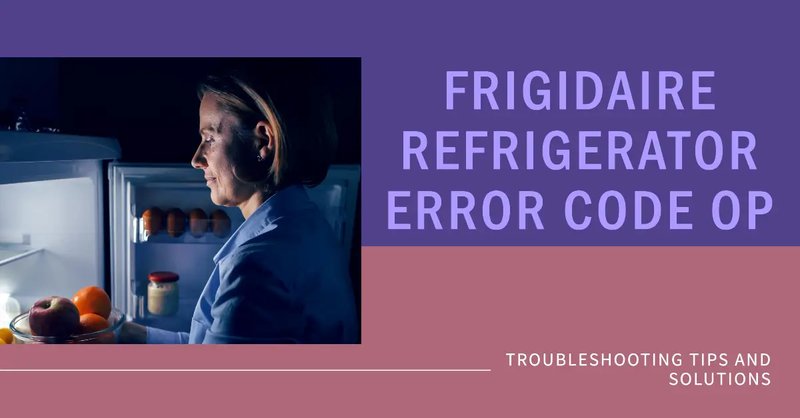
You might be wondering, “Why should I even bother with this error code if my fridge is working just fine now?” Well, here’s the deal: catching and addressing these small problems early on saves you a lot of hassle down the road. Imagine driving your car and ignoring the warning signs on the dashboard. Sooner or later, you’re going to end up stranded. The same logic applies to your refrigerator. Taking some simple preventive steps now can save you time, money, and the headache of dealing with a broken fridge later.
Understanding Error Code F1
First things first, we need to understand what this F1 error code is really about. In most Frigidaire refrigerators, an F1 error code is akin to your refrigerator waving a red flag about its freezer sensor. This sensor is crucial because it helps the fridge maintain the right temperature. Think of it like a thermostat in your house. If it decides to have a day off, things can get too chilly or not cold enough.
So, how does this happen? Over time, the sensor might wear out or get disconnected. Picture it as a phone line going down – the fridge can’t “talk” to the sensor to check if everything’s chill, literally. Weather conditions, regular wear and tear, or even a buildup of ice due to frequent door openings can lead to this issue. And while it might seem like a small part of the whole fridge, incorrect sensor readings can lead to bigger problems like spoiled food or inefficient energy usage.
Next steps? If you spot this error, it’s crucial to act swiftly. You can try resetting the fridge by unplugging it for a few minutes. Sometimes, like a tired computer needing a reboot, this can solve the problem. However, if the error persists, it might be time to call in a professional who can test or replace the sensor.
Routine Maintenance and Cleaning
Now, let’s dive into some maintenance tips that can help you avoid seeing that pesky F1 error again. Regular maintenance might sound tedious, but it’s your best defense against unexpected errors. It’s like flossing for your fridge – not glamorous, but oh-so-important.
Start with the basics: clean those coils! Dusty coils can make your fridge work overtime, which isn’t good for the sensors. Imagine trying to breathe through a straw that’s clogged – it’s hard, inefficient, and can lead to bigger problems. By cleaning the coils every six months, you prevent unnecessary strain on the appliance and keep everything running smoothly.
Don’t forget the gaskets – those rubber seals around the door are vital. If they’re not sealing properly, it’s like trying to heat a home with the windows open. Not efficient, right? Check them regularly for cracks or brittleness. A good clean with warm, soapy water can keep them in tip-top shape, ensuring the door closes properly and maintains the right internal temperature – helping the sensor do its job.
Finally, take a moment to declutter the inside. Yes, more space means cold air can circulate freely. A jam-packed fridge is like a traffic jam – everything slows down, and efficiency drops. So, keep it organized and avoid overloading it.
Future-Proofing Your Fridge
Alright, you’ve gotten a grip on the error code and what it means. How about making sure you’re not dealing with this again anytime soon? Here’s where future-proofing comes into play. Think of it as setting your fridge up with a foolproof plan.
One excellent way to keep errors at bay is to invest in a high-quality surge protector. Power surges can wreak havoc on your appliance’s electronics, much like a lightning storm can knock out your TV. A surge protector acts as a buffer, keeping those delicate circuits safe from unexpected jolts.
Next, consider setting reminders for regular checks. We all have busy lives, and it’s easy to forget about the quiet workhorse in the kitchen. Use your phone’s calendar or a simple sticky note on the fridge to remind you of routine checks and cleaning. It’s like scheduling a yearly checkup at the doctor – preventive health for your fridge.
Lastly, always stay informed. Technology changes, and so do best practices for appliance care. Keep an eye out for updates from Frigidaire or general appliance care tips. Knowledge is power, after all.
In conclusion, while an F1 error doesn’t signal the end of the world, it is a gentle nudge to take care of your refrigerator. Regular maintenance, understanding the root causes, and taking proactive steps can keep your fridge running smoothly for years to come. Now, go give your fridge some love, and keep it free from error codes in the future!
